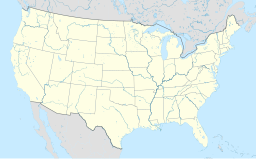Albert Gallatin Memorial Bridge
| Albert Gallatin Memorial Bridge | |
| Point Marion Bridge | |
| Cantilever bridge | |
|
1930 bridge (left) the day after its closing, with its replacement on the right.
|
|
| named for: Albert Gallatin | |
| Country | United States |
|---|---|
| State | Pennsylvania |
| Counties | Fayette, Greene |
| Municipality | Point Marion |
| Road |
|
| - Sidewalk | both sides |
| Crosses | Monongahela River |
| Coordinates | 39°44′21″N 79°54′12″W / 39.73917°N 79.90333°WCoordinates: 39°44′21″N 79°54′12″W / 39.73917°N 79.90333°W |
| Length | 810 ft (247 m) |
| - truss spans | 740 ft (226 m) |
| Width | 28 ft (9 m) |
| - roadway | 19.7 ft (6 m) |
| Builder | Point Marion Bridge Company |
| Design | cantilever through truss |
| Material | Steel |
| Built | 1930 |
| - Demolished | November 16, 2009 |
| Maintained by | PennDOT |
|
Marion Bridge
|
|

Side of the bridge
|
|
| Location | Pennsylvania Route 88 over the Monongahela River, Point Marion, Pennsylvania |
| Area | less than one acre |
| Built | 1930 |
| Architectural style | Cantilever through truss |
| MPS | Highway Bridges Owned by the Commonwealth of Pennsylvania, Department of Transportation TR |
| NRHP Reference # | 88000841 |
| Added to NRHP | June 22, 1988 |
The Albert Gallatin Memorial Bridge (also known as the Point Marion Bridge) was a cantilever truss bridge that carried vehicular traffic across the Monongahela River in the southwestern part of the U.S. state of Pennsylvania. Built in 1930 to replace a ferry, it connected Point Marion in Fayette County and Dunkard Township in Greene County. It was named in honor of U.S. Senator, and longtime U.S. Treasury Secretary and diplomat Albert Gallatin, whose Friendship Hill homestead is nearby.
The original bridge was constructed in 1930 by the Point Marion Bridge Company and rehabilitated in 1976.
It was a historically significant bridge due to the relatively unusual cantilever truss design and was listed on the National Register of Historic Places as the second oldest bridge of this type in the state.
It was replaced by the new Point Marion Bridge in October 2009. The old bridge was imploded on November 16, 2009.
West end of the 1930 bridge.
East end of the 1930 bridge.
West end of the 1930 and 2009 bridges.
The new bridge standing alone in 2010.
...
Wikipedia



